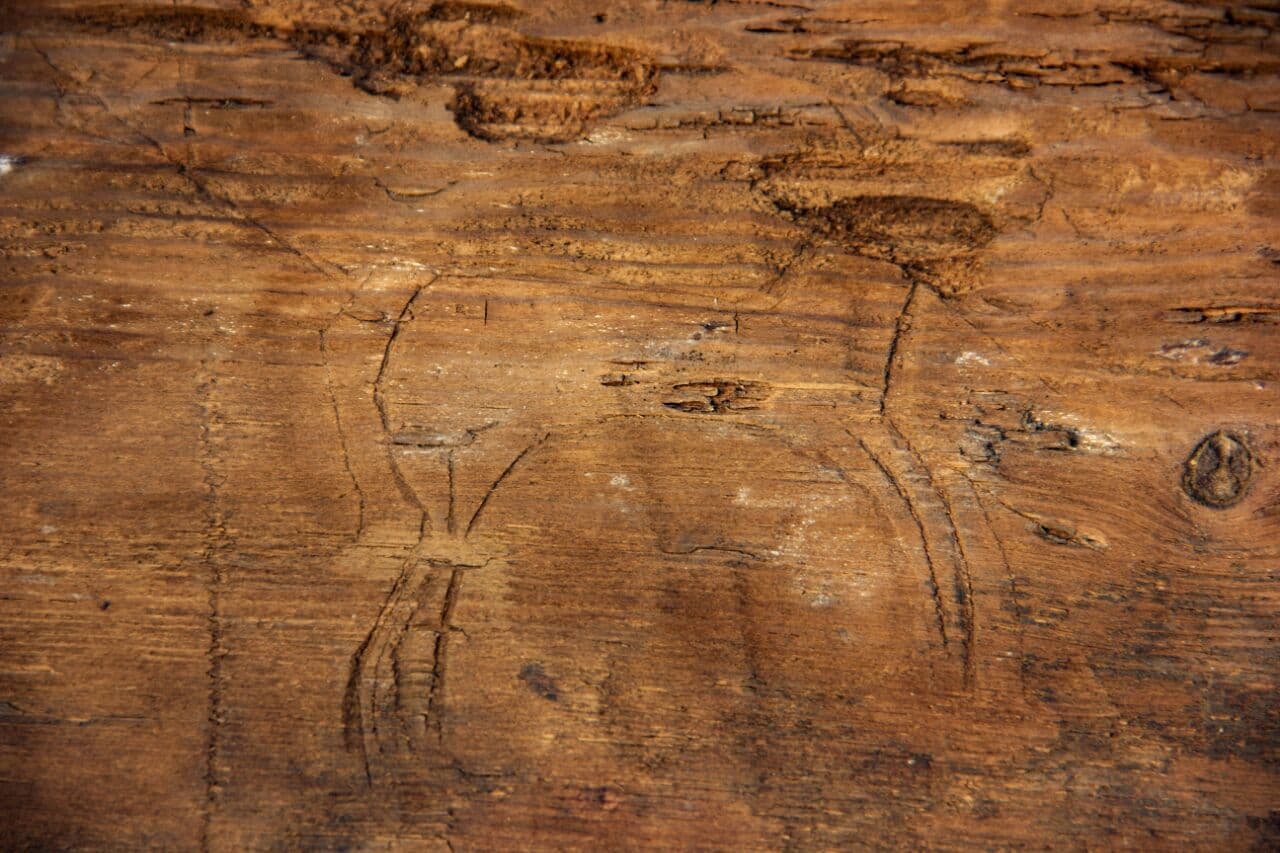Archaeologists from TSU and the State Hermitage Museum found an image of a hooved animal on the upper side of a plaque on the floor of the tomb chamber. This expedition to an Oglakhty burial mound is being conducted under the Presidential grant "The Heritage of the Oglakhty Range Through Time and Space".
"Tashtyk tombs do not usually have any artwork, and so this image of a goat or a deer is a huge rarity and we were lucky to find it," explained Svetlana Pankova, keeper of the Oglakhty collection of the State Hermitage Museum.
Previously, only individual objects with drawings on them were found in Tashtyk graves: wooden buckles, tattoos on the skin of the buried, and a bone pin with two goats.
This carving will help researchers recognize among the rock art of the same era the ones that belong to the early Tashtyk culture (1st-4th centuries AD).
"Moreover, this image introduces us to all the other famous images 'in Tashtyk style' that we previously encountered only in later burials (mass graves for 200 people)," Svetlana Pankova commented.
Later Tashtyk plaquettes (thin wooden pieces with carvings on both sides) have unique, dynamic images carved on them. Both sides feature images of battles, hunting, and running animals.
"This carving is close to Tashtyk style, because here you can see not only a goat but also the arrow hitting it. It is not only an animal; it is an action happening to it, it is a narrative scene. Of course, this one find will not answer all of our questions, but, as I said before, it's a major piece of luck," Svetlana Pankova noted.

Tashtyk Culture is a south Siberian archaeological culture of the Iron Age (1st-7th centuries AD). While being a descendant of the Tagar (part of the wider Scythian cultures), it fundamentally differs by many new traditions.
There are two types of Tashtyk burial rites. The first is burial mounds with mummified human remains and human-sized burial dolls with cremated human bones inside of them. Later (5th-7th centuries), there are locations with up to 200 people buried in one place.






